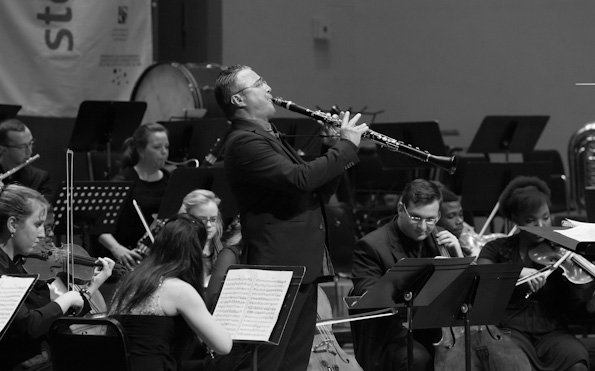
Musical careers are seldom built on a continuation of triumphs, but rather on a consistent growth in both musical maturity and, in tandem with that, technical finesse. Just prior to 2008 when the remarkable pianist Alfred Brendel made a personal, rational decision to refrain from giving concerts in public after a career of 60 years, he said in an interview: “In 1949 when I was eighteen I entered the Busoni Competition in Bolzano, Italy. I was awarded the fourth prize. At the next prominent international competition which followed, in Genève, Switzerland, I did not get any further than the second round”. Notwithstanding these chain of events which, in the public eye, might seem to be set-backs, Brendel enjoyed a brilliant career through exactly knowing the path he should take to unleash his own potential. He chose amongst others composers with which he could develop a personal relationship lasting a lifetime: Haydn, Mozart, Beethoven, Schubert, Liszt, Schumann, Brahms, but also a 20th century composer like Arnold Schoenberg whose Piano Concerto he championed through dozen of performances worldwide.
When the SICMF reached the point yesterday when their capacity audiences could hear the first fully fledged orchestral concert of the 2016 festival, one could not but think about the future career decisions each one of the 110 members of this orchestra will have to make in the coming years. Whatever they decide, they will look back and be blessed by the opportunity of having performed in a youth orchestra. Ask me: I’ve been there and done that and the memories of these experiences, and especially the camaraderie, will follow you for a lifetime.
PAUL BOEKKOOI reflects on an excellent showcase of orchestral skill through a program of music by Adams, Mozart and Bartók.
Béla Bartók’s Concerto for Orchestra, Sz.116, is an irrefutable peak amongst orchestral music of the first half of the 20th century. It is a fascinating and vital eruption of creativity which can and did change the course of history. In this case it came from a displaced composer who suffered from hardships and was clinging to life. Thinking back in music history there are some similar examples, like Mozart with his Requiem and Albéniz with his Iberia. The flame which set Bartók creatively alight, was the Russian conductor Serge Koussevitzki who commissioned this work for the Boston Symphony Orchestra. The world premiere in Boston at the end of 1944 was followed by two performances in New York’s Carnegie Hall on January 10 & 13, 1945.
The mega-success of these events led to an international Bartók-wave which spread like wildfire, but he passed away before it would bear any fruit or a reassessed fame for him. The Concerto for Orchestra is his most monumental work and represents the core of his legacy. The Festival Symphony Orchestra conducted by Kazem Abdullah honoured the composer in this performance for his unique idiom. Among the most characteristic elements, we find the folkloristic melodies and -rhythms, the dramatic contrasts between jest and tragedy (and everything in between), as well as the, for him, very personal as well as mysterious “night sounds” in which we particularly detect some influences of Debussy.
Maestro Abdullah’s clear beat and dynamically informative left hand must have guided the musicians in more than just ample leadership and inspiration to give their best in a work that has many hurdles and complications. Ensemble was mostly remarkable and precise, with only isiolated cases of sudden gear changing regarding tempi which were not perfectly spot-on. Much more idiomatic were the ideally executed contrasts in mood Abdullah achieved – especially important in the opening movement. In the Allegretto scherzando second movement, nicknamed “the dance of the couples” the pairs of woodwind did stellar work. Hereafter the dark-toned tragedy of the Elegia was heart-rending due to the fact that the threatening mood it reflects was cleverly and constantly sustained.
In the fourth movement, Intermezzo Interrotto, contrasts were colourfully handled – especially the humorous and close to burleske-like outbursts by the brass. The predominant moto-perpetuo structure found in the finale, Pesante-Presto, once again brought out to centre stage the burst of orchestral energy and flamboyancy which often becomes a hallmark when younger musicians are let loose on music they can strongly identify with. The conductor guided them with the kind of necessary insight and skills to precisely reach that goal.
The Austrian clarinettist Ferdinand Steiner – another star amongst the faculty members – performed Mozart’s final concerto, the one in A major, K.622, with an exquisite musicality and dynamic versatility which let this well-known work sound newly-minted. It seems that a new approach to the work of late is universally dominant: to allow more riterdandi to intrude (also where they are not marked in the score) and to perform some of the softest passages in a way that they become nearly inaudible. Steiner’s control of them were quite stunning in phrasing and sound, but can this be true to the ideals of Classicism? During the Rondo: Allegro Steiner made space and time for a cadenza, influenced by jazz. He chose a partner, the violist Gareth Lubbe, to echo some of his inventive and often humorous phrases from the back desk of the viola section. This was pure fun and the audience thought so too. Nearly the same idea was also implemented by the ‘cellist Lynn Harrell when performing a cadenza for a Haydn ’cello concerto.
The Chairman Dances by John Adams was the curtain raiser for this concert. You can call it minimalism, minimal music, or “music with repetitive structures” as Philip Glass does, but the core of the issue is that it is like taking the orchestra to the gym for a proper workout. It seemed that those representatives of a younger generation in the audience responded with enthusiasm to the music. And so did every instrumentalist in the orchestra who meticulously followed Kazem Abdullah’s precise instructions from the podium.
